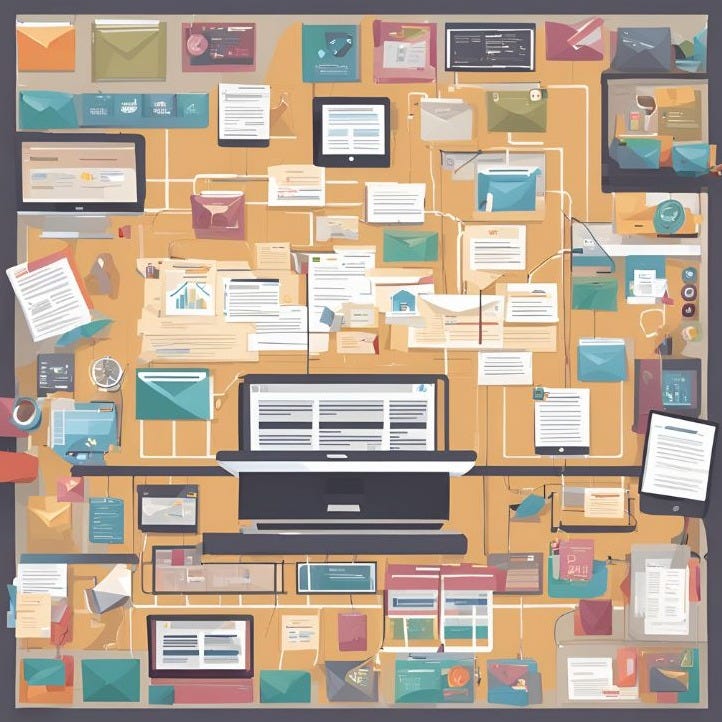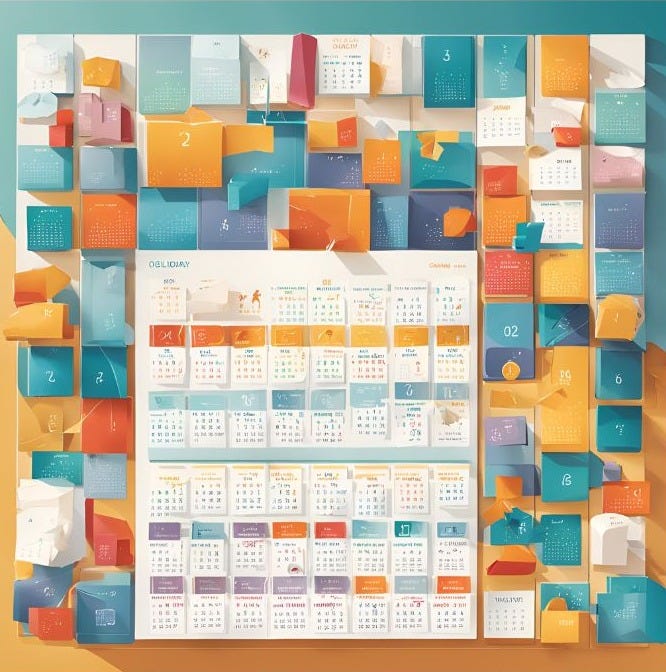Sections of Time
“How we spend our days is, of course, how we spend our lives.” -Annie Dillard
A challenge of most knowledge work is that the tasks which matter most (for tenure, for promotion, for impact) are the ones with the least accountability.
This means it’s very easy to fall into the trap of filling your day with work that seems productive (emails, committees, meetings, also known as pseudo-productivity), but doesn’t actually contribute to your success. Of course emails and meetings need to happen, but if you don’t carefully plan and protect your time it will consume you.
I’ve really come to appreciate using a multi-level framework for organizing my time that scales from years to quarters to weeks to days. At the daily and weekly level, I’ve created my own methodologies over the last 10+ years, and continue to define and refine.
More recently since finishing my PhD, I’ve constructed and incorporated planning at a yearly and quarterly level. My methods for planning have evolved from my own experimentation as well as reading and synthesizing other’s ideas (Cal Newport, Gretchin Rubin, NCFDD Core Curriculum to name a few).
When you start a new job, knowing everything you need to do and how to do it takes time. It can be hard to plan what you want your goals to be by the end of the year if you don’t even know what you’re doing next week.
That being said, if the framework is in place, you’re ready to be effective with your time once you know what you want to accomplish, even if you don’t employ it on day one.
The first level of multi-scale planning is looking at what you want to focus on over the year.
12 Month Vision
During my PhD, I didn’t have a good sense year to year of what I should be accomplishing to be successful. I didn’t know what success would look like for myself.
I thrived with the day to day and weekly planning, knocking out experiments and being efficient with my hours. However, I didn’t have a strategic vision of what actual steps I needed to take to get to a larger goal, such as a publication.
Deciding what work has the biggest impact and aligning your daily tasks with your long term goals isn’t straightforward. In the workplace, new priorities come up or projects need to take a different direction all the time. Your own career aspirations might evolve as you experience different roles or have different personal priorities.
Especially if you’re starting a new job, ask your manager what is key to accomplish within the year. They will have insights into higher leadership strategies and they evaluate your performance, so ensure you are checking in with them. Yearly goals change, but this doesn’t mean you shouldn’t have them.
I don’t have a 3, 5, or 10 year plan. I’ve been inspired by an Angela Duckworth interview where she mentioned having a North star and navigating your professional life in relation to that.
It’s hard to predict what you’ll want your career to look like in 5 years. Having a sense of what direction you’re hoping your career will take can be helpful on a yearly scale. When side projects come up, you can volunteer for those stretch assignments that align with your career vision.
Be open with your manager about these career goals as well so they can direct you to these opportunities. Even within a specific and constrained project, try to find aspects or tasks that will contribute to your professional development and reflect your own career objectives.
Yearly Snapshot
I am moving in the general direction of my North star, but how this looks changes all the time. Using a yearly scale of planning has been helpful for me, but there is no one way to organize your time. I think compiling different ideas to mold it into your own methods is the most effective.
In my professional life I’m still fine tuning the best way to do this. I try to have concrete job specific aims, such as launching a program or hosting events. I also want to capture skills I’d like to develop (improving my coaching technique) or try out stretch assignments (developing content for a hands-on workshop). There is of course just the regular work of any role, but for this practice I like to focus on longer term initiatives and areas to grow.
In my personal life I like to have a list of big and small goals I want to complete each year. The items on the list can change as the year progresses, but it gives me accomplishments to work towards over the year. These items can be administrative (automating my savings), habits I want to continue (running every week), travel plans (going on a road trip) or broader career goals (starting a newsletter).
Starting with yearly goals can seem slow and abstract, especially when starting a new job. Take time to reflect on what work will move the needle forward. Build a foundation for accomplishing assignments that will have the greatest impact on your career rather than just checking off a to-do list every day.
With this information, you can plan each quarter by taking into account both immediate tasks and long term goals. Once you know what to focus on in a given week, you can carefully assign work to each day. Come back next week for a deep dive into this scale of the planning process.







I really enjoyed your thoughts this week.
Thanks